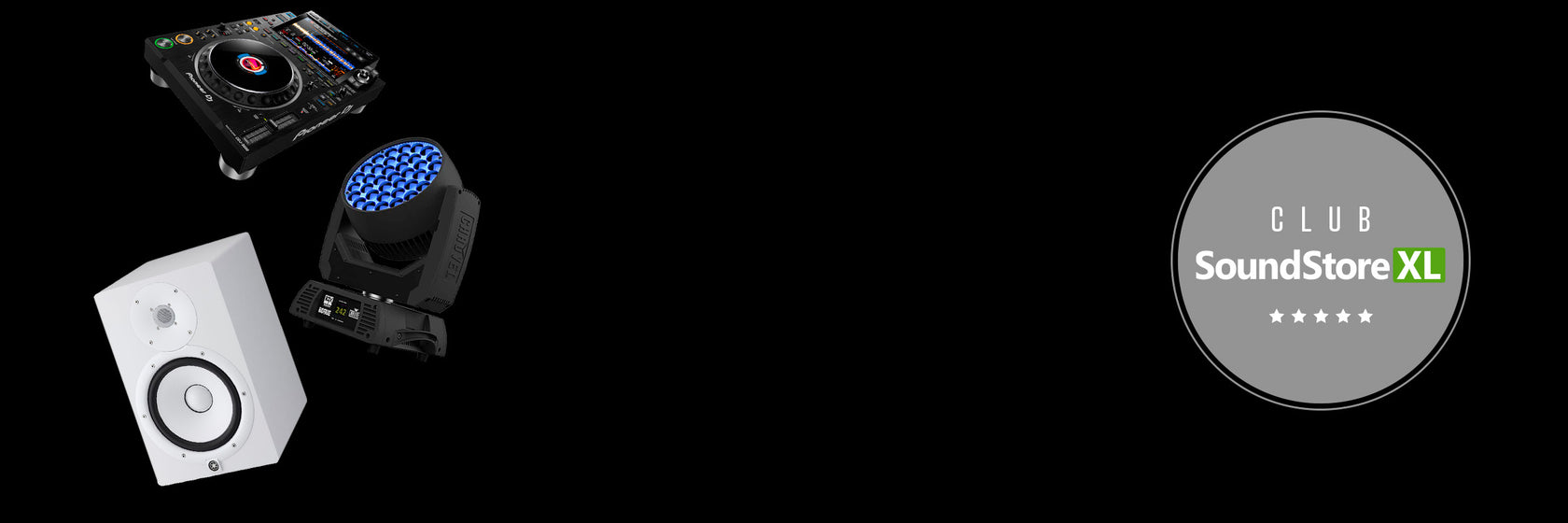Guitar Cabinets
- Highlighted
- Bestsellers
- Alphabetical, A-Å
- Alphabetical, Å-A
- Price, low to high
- Price, high to low
- Date, older to newer
- Date, newer to older
FiltersFilter & sorting

Join Club SoundStoreXL
- and gain access to unique perks
- Exclusive benefits
- Early Bird access to deals
- Unique coupon codes for members
- It's completely free to join!
Guitar Cabinets: Guide to Selection, Sound, and Maintenance
Guitar cabinets play a crucial role in shaping your overall sound, and choosing the right one can take your tone to the next level. For guitarists, understanding how different cabinet types, speaker configurations, and materials affect sound is essential. A guitar cabinet is not just a housing for speakers—it’s a key component that interacts with your amplifier to form your tone. In this article, we’ll dive deep into how to choose the best guitar cabinet, how to match it with your amplifier, and how to maintain it for long-lasting performance and optimal sound.
What Is a Guitar Cabinet and Why Is It Important for Your Sound?
A guitar cabinet is an enclosure that houses the speakers and projects the sound from your guitar amplifier. The cabinet’s role is to deliver the sound produced by your amplifier in a way that suits your playing style and genre. The design and construction of the cabinet significantly influence the character of the sound, making it an essential part of your rig. Many guitarists underestimate the impact a cabinet can have, but choosing the right one is just as important as selecting the right amplifier.
When selecting a cabinet, you should consider speaker configuration, cabinet material, and size. The difference between a 1x12, 2x12 cabinet, and a 4x12 cabinet is not just the number of speakers but how they interact with the room and your overall sound output. A single-speaker cabinet will produce a more focused sound, while multiple speakers create a broader and more resonant tone, making them popular in rock and metal genres.
Speaker Configuration and Cabinet Size: How It Affects Your Sound
The speaker configuration in a cabinet plays a significant role in shaping your sound. The most common configurations are 1x12, 2x12, and 4x12 cabinets, where the number before the “x” represents the number of speakers, and “12” refers to the speaker diameter in inches. The more speakers a cabinet has, the fuller and more expansive the sound will be. A 1x12 cabinet is compact and suited for smaller spaces and studio recordings, while a 4x12 cabinet offers maximum volume and fullness, making it ideal for live performances on larger stages.
The size of the speakers also affects the sound. Larger speakers like 12-inch drivers provide a deeper and more resonant tone, while smaller speakers can offer a more focused and articulate sound. Choosing the right speaker configuration depends on your genre and where you perform. For jazz and blues guitarists, a smaller cabinet for jazz and blues with one or two speakers may be ideal for achieving a warmer, more detailed tone, while rock and metal players often prefer larger cabinets for a fuller, more powerful sound.
Materials and Design: Open vs. Closed Cabinets
The design and materials of a cabinet are just as important as the speaker configuration. Cabinets can be open or closed, and each type has its own sound characteristics. Open-back cabinets have an open rear panel that allows sound to escape both front and back, creating a more open and airy sound. This type of cabinet is ideal for guitarists who want their sound to interact more with the room, such as in jazz or blues.
Closed-back cabinets have a solid rear panel that keeps the sound inside the cabinet, resulting in a more focused and punchy sound with stronger bass response. Closed cabinets are popular among rock and metal players because they deliver a more intense and powerful tone. The material of the cabinet also affects the sound—cabinets made from solid wood tend to produce a warmer and richer tone compared to those made from plywood or MDF.
Matching a Guitar Cabinet with Your Amplifier
Properly matching your cabinet with your amplifier is essential for achieving the best sound and avoiding damage to your equipment. When matching a guitar cabinet with an amplifier, you need to consider both the wattage of the cabinet and the amplifier, as well as the impedance (measured in ohms). If the impedances don’t match correctly, it can lead to overheating or damage to either the amplifier or the cabinet.
Typically, cabinets come with an impedance rating of 8 or 16 ohms, and you must ensure that your amplifier can handle that impedance. Many modern amplifiers feature multiple output jacks with different impedance options, allowing you to pair them with a range of cabinets. If you’re unsure how to properly match your cabinet and amp, it’s a good idea to consult the manuals for both units or ask a professional technician for guidance.
Maintaining Your Guitar Cabinet
Keeping your cabinet in good condition is crucial for extending its lifespan and ensuring it continues to deliver optimal sound. An important part of guitar cabinet maintenance is keeping the cabinet clean and free of dust, especially around the speakers, which can be damaged by accumulated dirt. You should also avoid exposing your cabinet to extreme heat or moisture, as this can damage both the wood and the electronics.
If you use your cabinet for live performances, be mindful of transportation and storage. It’s a good idea to invest in a flight case to protect the cabinet during transport. Regularly checking the speaker connections and the overall condition of the cabinet will ensure that your equipment continues to perform at its best for years to come.

























